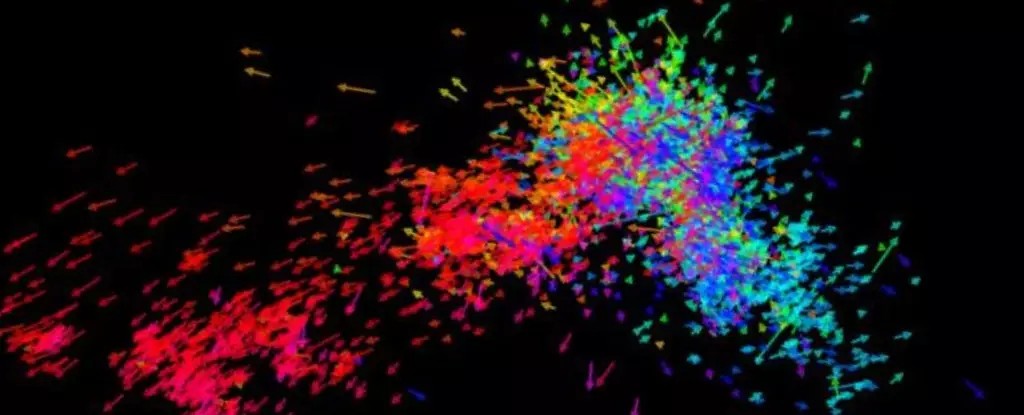Throughout the universe, galaxies waltz through the cosmos, drawn together by the invisible threads of gravity in a complex ballet that defines their fates. Recent investigations by a team from Nagoya University unearthed significant revelations about the smaller of the esteemed Magellanic Clouds—the Small Magellanic Cloud (SMC). These dwarf galaxies, orbiting the grand Milky Way, provide an illuminating glimpse into the dynamics of galactic interactions, particularly as the SMC appears to be succumbing to gravitational forces exerted by its larger counterpart, the Large Magellanic Cloud (LMC).
Situated around 160,000 to 200,000 light-years from Earth, the SMC and LMC are not merely celestial bodies; they are repositories of stellar evolution, rich in gas and young stars. Together, they are interconnected by a vast expanse known as the Magellanic Bridge, a stream of gas that ties the two galaxies together, while also forming the trailing Magellanic Stream—an ethereal ribbon of material stretching across the southern sky.
Gravitational Tides and Stellar Migration
The research team, led by Satoya Nakano and Kengo Tachihara, meticulously tracked the movements of approximately 7,000 massive stars within the SMC. These stars, each born from hydrogen-rich regions and boasting masses exceeding eight times that of our Sun, displayed unusual trajectories that suggest their galactic home is undergoing profound changes. Some stars appeared to be drifting toward the LMC while others were pulling away, hinting at a catastrophic gravitational tug-of-war where the SMC is being irreversibly torn apart.
Such findings not only raise alarms about the fate of the SMC but also challenge the previously held notions of galactic stability and interaction. The chaotic movements reveal a disruption that might not just erase the SMC from the cosmic map but could also reshape our understanding of how galaxies evolve through gravitational exchanges.
Rethinking Galactic Dynamics
One of the most striking aspects of this study is the unexpected lack of rotational movement among the massive stars in the SMC. This is in stark contrast to our own Milky Way, where stars and gas rotate in a harmonious manner. Usually, young, massive stars remain tied to their gas clouds during their formative years before eventually breaking free. However, the lack of a clear rotational pattern in the SMC’s stellar population suggests that the gas itself—essential for star formation—is not exhibiting typical rotational dynamics.
This radical deviation could prompt scientists to reevaluate the mass calculations of the SMC and assess its role in the gravitational interplay with the LMC. The implications for our understanding of these two companions and their relationship with the Milky Way extend far beyond simple observations. As Nakano suggests, this work is not merely academic—it may necessitate revisiting fundamental questions about galactic behavior and formation.
A Window into the Universe’s Past
The SMC serves as a living laboratory for understanding primordial galaxies, mirroring conditions that may have existed during the early epochs of the universe. Observing the motions of stars within these dwarf galaxies provides critical insights into the processes of star formation and the gravitational interactions that seed the cosmic landscape. By unraveling these fundamentals, researchers stand on the precipice of transformative knowledge that could redefine our interpretation of galactic life cycles.
Furthermore, grasping the models of how gas clouds interact with stars enhances our comprehension of the cosmos. The potential insights gleaned from the SMC and its interplay with the LMC and Milky Way could illuminate not just the fate of these galaxies but also the principles that dictate the evolution of star systems across the universe.
The unraveling story of the Small Magellanic Cloud demonstrates the power of research to broaden our horizons. By challenging existing paradigms, researchers illuminate the complex tapestry of celestial interactions—a reminder that the universe remains an enigmatic yet captivating place, ever ready to disclose its secrets to those willing to explore the cosmic frontier.

